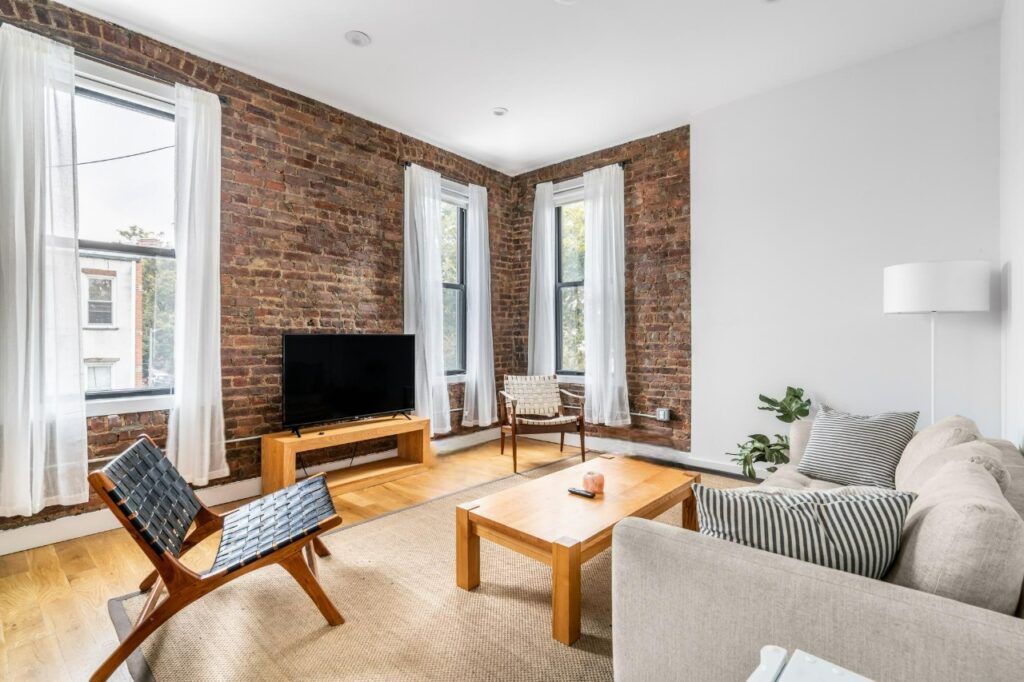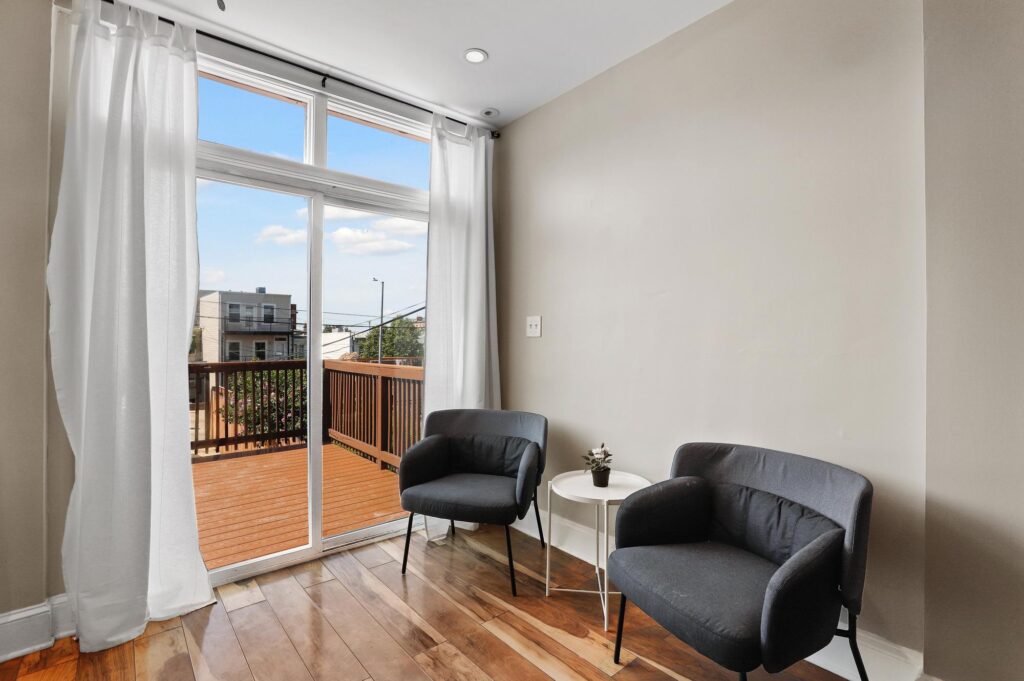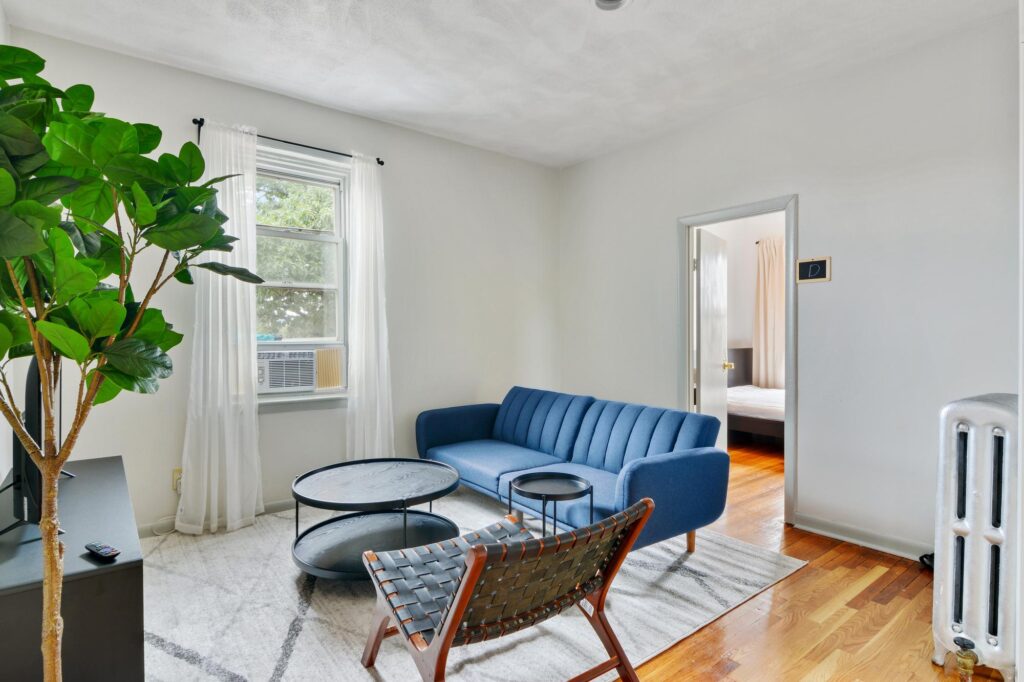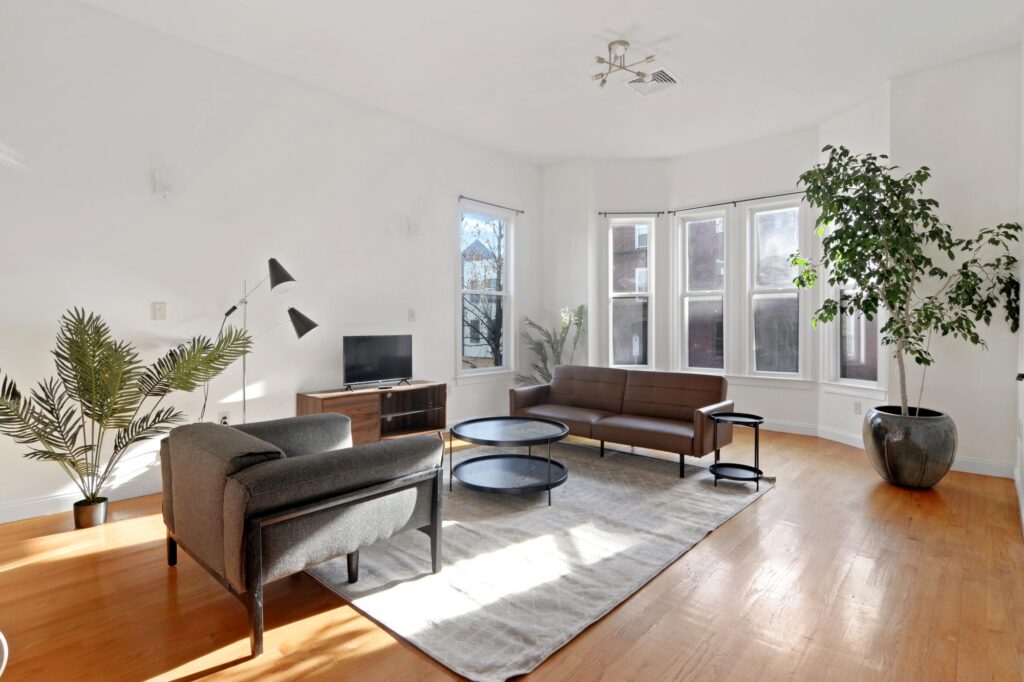Estimated reading time: 15 minutes
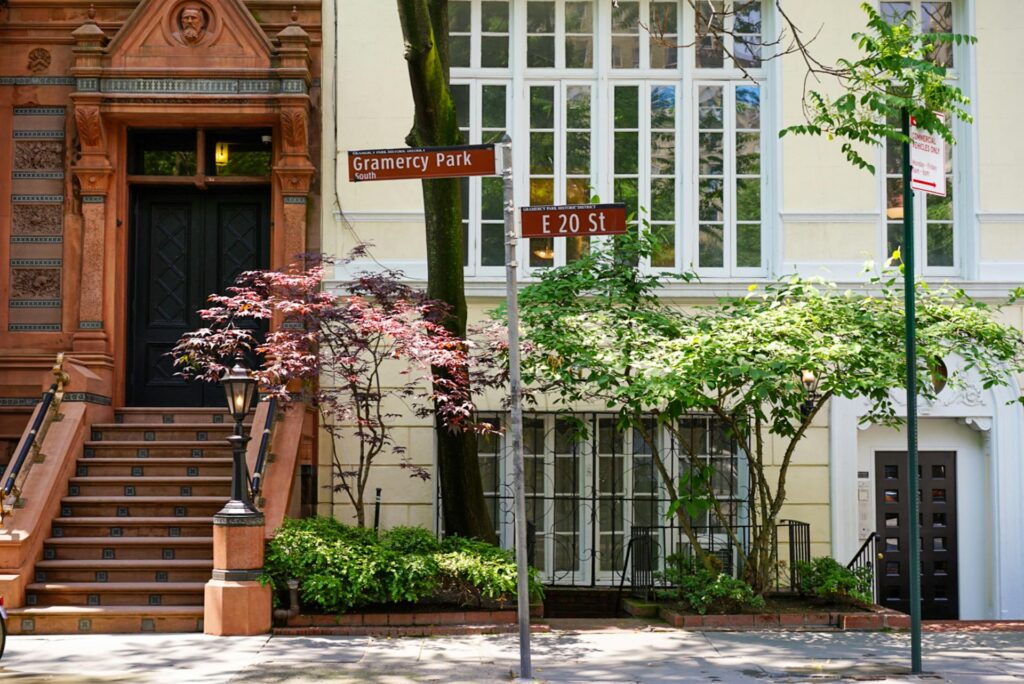
Traditional leases lock you in for a year. Hotels drain your bank account after a week. But what if you need housing for that awkward middle period – three months for a contract job, a semester studying abroad, or just enough time to figure out if you actually like living in NYC before signing a year-long commitment?
Welcome to the world of mid-term rentals, where flexibility costs more than annual leases but way less than your sanity is worth. The trick isn’t just knowing these rentals exist – it’s knowing how to actually find the good ones before they disappear.
Why Mid-Term Rentals Are Different (And Harder to Find)
Most rental platforms optimize for either weekend getaways or year-long commitments. That middle ground – the 30 to 180-day sweet spot – gets treated like an afterthought. Vacation rental hosts see monthly tenants as risky (what if you trash the place for weeks instead of days?). Traditional landlords see short-termers as unstable (why would anyone need just four months of housing?).
This leaves people in legitimate transitional situations – consultants on project-based contracts, travel nurses between assignments, professionals testing out new cities, students doing semester internships – scrambling to find decent housing that doesn’t require furniture shopping or year-long financial commitments.
Understanding what mid-term rentals actually are helps you search more effectively and recognize good options when you find them.
Start With Specialized Flexible Housing Services
June Homes: The Easy Button for Mid-Term Housing
If you want to skip the hassle entirely, June Homes solves the mid-term housing problem better than anyone else. They provide fully furnished rooms with flexible terms and professional management.
Here’s what makes June Homes different: they’re not a vacation rental platform pretending to do long-term housing, and they’re not traditional landlords grudgingly offering shorter leases. They built their entire model around people who need flexibility without sacrificing quality or paying hotel prices.
You get a private bedroom in a professionally managed shared apartment with pre-screened roommates. Everything comes furnished and you’re not stuck figuring out how to split bills or coordinate internet setup with strangers.
The catch? You’ll pay more than finding your own apartment and roommates. But you’re paying for speed, convenience, and the knowledge that someone else handles maintenance emergencies at 2am. For people in transitions, that’s worth the premium.
Available in major cities where mid-term housing is hardest to find – NYC, Boston, Chicago, DC, and expanding.
Enjoy a hassle-free, high-end rental experience for stays of one month or longer in major US cities.

Fully-furnished rooms and apartments with flexible lease. Apply today and move in tomorrow.
When Professional Management Makes Sense
Services like Landing, Blueground, and Outpost operate similarly – fully furnished places with flexible terms and professional management. They work best when:
- Your company is covering housing costs and wants proper invoicing
- You value consistency and want to move between their properties in different cities
- You’re willing to pay extra for hotel-level reliability
- You don’t want to interview potential roommates or deal with individual landlords
These platforms transform housing into a subscription service. Pay your monthly fee, everything works, move when you need to. It’s boring in the best possible way.
Leverage Vacation Rental Platforms (With Strategy)
Airbnb: The Obvious Choice That Actually Works
Everyone knows Airbnb, but most people use it wrong for mid-term stays. Don’t just filter by dates and hope for the best. Here’s what actually works:
Message hosts directly before booking anything. Explain your situation – you’re a professional needing housing for X months, you’re clean and quiet, you work normal hours. Ask if they offer monthly discounts beyond what’s shown. Many hosts will negotiate rates for longer stays because reliable monthly income beats managing constant turnover.
Look for “monthly stay” designated listings where hosts specifically want longer-term guests. These people understand you’re not a tourist – you’ll want to cook real meals, do laundry regularly, and treat the place like home rather than a hotel.
Calculate the real monthly cost including cleaning fees divided across your stay. A place showing $3000/month might actually cost $3400 when you factor in the $400 cleaning fee. Or it might cost $2800 if the host offers bigger discounts for 90+ day stays.
Read reviews for long-term stays specifically. Weekend guests have different standards than monthly renters. Look for reviews mentioning comfortable workspaces, good kitchen equipment, and responsive hosts when things break.
VRBO and Similar Platforms
Works similarly to Airbnb but sometimes has better options in specific markets. Worth checking both platforms since some hosts only list on one. Same strategy applies – communicate directly, look for monthly-focused listings, calculate true costs.
Tap Into Sublet and Temporary Housing Networks
Furnished Finder: Built for Healthcare Workers, Open to Everyone
Originally created for travel nurses but available to anyone, Furnished Finder specializes in exactly what you need – furnished places available for 1-6 month terms.
Landlords on this platform understand temporary housing needs. They expect professional tenants who treat housing seriously but need flexibility. Prices often beat vacation rental platforms because these aren’t designed for tourists willing to pay premium rates.
Particularly strong in cities with major medical centers, but expanding coverage nationwide.
Sublet.com and Leasebreak.com: Finding Other People’s Apartments
People need to sublet their apartments for all kinds of reasons – studying abroad, extended work travel, family emergencies. Their timeline problem becomes your housing solution.
Pros: Often cheaper than purpose-built furnished rentals. Real apartments in normal neighborhoods. Sometimes comes furnished with their belongings.
Cons: You’re subletting from another tenant, not the landlord directly. Legal complexity around subletting vs subleasing matters. Original tenant remains involved, which can get weird.
Safety tip: Verify the person actually has permission to sublet. Avoiding rental scams requires extra diligence when dealing with subletters rather than property owners.
Location-Specific Strategies That Actually Work
New York City: Where Mid-Term Housing Is Both Abundant and Competitive
NYC has massive demand for flexible housing from people doing everything from Broadway shows to consulting gigs to internships. This means options exist, but competition is fierce.
Start your search 6-8 weeks before you need housing. Use multiple platforms simultaneously. Consider all five boroughs – Brooklyn and Queens often have better value than Manhattan for mid-term stays.
NYC-specific resources include Gypsy Housing and ListingsProject, which cater to creative professionals and often include sublet opportunities.
Boston: University Town = Seasonal Opportunities
Boston’s rental market revolves around academic calendars. Summer sublets flood the market as students leave for break. September brings another wave as people move for school or jobs.
University housing boards often list mid-term options even for non-students. Check BU, Harvard, MIT, Northeastern housing pages. Medical professionals can access hospital housing resources at major medical centers.
Timing matters enormously – search in May for summer housing or late July for September moves to catch peak inventory.
Chicago: Affordable City With Underrated Options
Chicago’s reasonable rent makes mid-term housing more accessible than coastal cities. Less competition means more negotiating power with landlords willing to do flexible leases.
Local platforms like Windy City Rentals understand seasonal demand. Winter moves offer best deals since fewer people want to relocate during brutal cold, but summer brings more inventory.
Washington DC: Government Contracts Drive Demand
DC’s project-based government and consulting work creates steady mid-term housing demand. Neighborhoods popular with young professionals often have landlords accustomed to flexible arrangements.
Check corporate housing services that cater to government contractors – they often have inventory available for individual renters too.
Austin: Tech Hub With Growing Inventory
Austin’s tech scene brings professionals on contract work regularly. Local services like Live Like a Local and Austin Apartment Experts know the mid-term market well.
Short-term rental options are more common here than traditional markets, giving you more negotiating leverage.
The Craigslist Strategy (When You’re Brave or Br*ke)
Yes, Craigslist still works for finding housing. Yes, you need to be careful. Here’s how to use it without getting scammed:
Search daily because good deals disappear fast. Use specific search terms like “furnished month-to-month,” “flexible lease,” “short-term furnished,” “corporate housing.”
Only contact listings with photos showing actual interiors, not just exterior building shots or stock images. Scammers rarely have real photos.
Insist on viewing in person before any money changes hands. Never wire money, send cash, or pay before seeing the space and meeting the landlord face-to-face.
Verify ownership by checking public property records or asking to see their deed/mortgage statement. Scammers can’t produce these documents.
Trust your gut about people and situations that feel off. Craigslist has legitimate options but also attracts scammers targeting desperate renters in transition.
Good deals exist on Craigslist – you just need to sort through more garbage to find them compared to managed platforms.
What to Actually Look For in Mid-Term Rentals
The True Cost Breakdown
Understanding hidden costs matters more for mid-term rentals than traditional leases. Calculate monthly cost including:
- Base rent quoted
- Utilities (electric, gas, water) if not included
- Internet if not included
- Platform fees (Airbnb charges 10-15% guest service fees)
- Cleaning fees divided across your stay
- Parking if you need it
- Required renters insurance
- Security deposit (refundable but ties up money)
A $2500/month Airbnb might actually cost $2900/month after fees. A $2800/month place through June Homes might be cheaper if utilities and services are included.
Essential Features for Extended Stays
Furnished doesn’t always mean livable. Vacation rentals optimized for weekend tourists often lack things that matter for longer stays:
- Actual workspace with decent chair and lighting
- Full kitchen with pots, pans, basic cooking equipment
- Enough closet space for a month+ of belongings
- Washing machine access (in-unit or nearby)
- Comfortable mattress and proper bedding
- Reliable internet that handles video calls
- Basic cleaning supplies and vacuum
Furnished apartment essentials differ dramatically from vacation rental amenities. Make sure what’s “furnished” actually works for your needs.
Location Considerations
Commute matters more when you’re living somewhere for months versus visiting for days. Factor in:
- Daily commute time to work/school
- Access to groceries, pharmacy, basic services
- Public transit options if you don’t have a car
- Neighborhood safety for walking at various hours
- Proximity to amenities you’ll actually use regularly
What seems fine for a long weekend can become exhausting when it’s your daily reality for three months.
Negotiation Tactics That Actually Work
Leverage Your Stability
You’re offering something hosts and landlords value – reliable monthly income without turnover hassle. Use this:
“I’m looking for housing from [date] to [date] and I’m a professional [your field]. I work normal hours, keep places clean, and you won’t have to worry about constant turnover or partying guests. Would you consider reducing the rate for a guaranteed X-month stay?”
Many hosts would rather accept slightly less monthly rent than deal with booking calendar gaps, cleaning between guests, and vetting new people constantly.
Ask About Extended Stay Discounts
If platform-shown rates seem high, message directly: “I see your nightly rate is $X, which comes to $Y per month. Do you offer additional discounts for stays over 30/60/90 days beyond what’s shown?”
Hosts who really want monthly tenants will negotiate. Hosts just testing the waters won’t. This filters quickly.
Propose Win-Win Modifications
“Would you consider removing the cleaning fee if I handle cleaning myself since I’m staying for months?” or “Could we reduce the rate if I cover utilities directly instead of them being included?”
Some hosts will work with you on structure to make numbers work for both sides.
Time Your Search for Best Results
Start Earlier Than You Think
6-8 weeks before move-in gives you negotiating power. 2 weeks before makes you desperate, and desperation costs money.
Good mid-term options move faster than annual apartments but slower than hotel rooms. Starting early lets you wait for quality options rather than grabbing whatever’s available.
Understand Seasonal Patterns
Summer brings peak inventory in university towns as students leave but also peak competition as people relocate for jobs.
Winter offers best deals but least inventory. Fewer people moving means more negotiating power if you find options.
September/January sees spikes around academic calendars and new year job starts.
Timing your search to catch inventory waves before competition peaks gives you better options and prices.
Making Your Decision: Which Approach Fits Your Situation
Choose Professional Services (Like June Homes) When:
- Your employer covers housing and wants proper invoicing
- You value convenience over cost savings
- You’re new to a city and want minimal logistics
- You need housing fast without time for extensive searching
- Peace of mind from professional management matters to you
Choose Airbnb/VRBO When:
- You want more control over exact location and amenities
- You’re willing to do more research for potentially better value
- You prefer entire places to yourself over shared living
- You have time to communicate with multiple hosts and negotiate
Choose Sublets When:
- Budget is your primary concern
- You want to live in a real residential neighborhood
- You’re comfortable with slightly more legal ambiguity
- You don’t mind if spaces aren’t perfectly optimized for short-term living
Choose DIY Craigslist When:
- You’re genuinely broke and need to minimize costs
- You have time to sort through listings daily
- You’re savvy enough to spot scams and verify legitimacy
- You’re comfortable with less professional arrangements
The Reality Check Nobody Talks About
Mid-term housing costs more per month than annual leases. This isn’t price gouging – it’s economics. Landlords and hosts take on more risk with shorter commitments. They lose money during transition periods between tenants. They can’t count on stable year-long income.
You’re paying for flexibility. The ability to move without breaking leases, the option to try cities before committing, the freedom to take temporary opportunities without housing panic – all this has value beyond just the monthly rent number.
Whether that flexibility is worth the premium depends entirely on your situation. Someone doing a three-month consulting contract earning $15k/month can easily justify $3500/month for convenience. Someone between jobs burning through savings should probably suck it up and get a traditional lease with roommates.
Be honest about whether you truly need mid-term housing or just prefer it because it’s easier. True need – summer internships, contract work, medical assignments, testing out cities – justifies the premium. Preference for avoiding commitment might not.
Frequently Asked Questions About Mid-Term Rentals
What is the definition of a mid-term rental?
A mid-term rental typically refers to a furnished lease lasting 1 to 12 months, most often used by students, digital nomads, traveling professionals, or anyone in a transitional life stage.
What is the difference between mid-term and long-term rental?
- Mid-term rentals usually run 1–12 months and are often furnished, with flexible terms.
- Long-term rentals generally start at 12 months or more, are often unfurnished, and may require more rigid lease agreements.
Is 4 months a short-term rental?
Not usually. A 4-month lease generally falls into the mid-term category, since short-term rentals are typically under 1 month (think vacation rentals or Airbnbs).
Is 6 months a short-term rental?
No. A 6-month lease is generally considered mid-term, especially if the property comes furnished.
What is considered mid-term?
Anything between 1 and 12 months is usually classified as a mid-term rental. This range bridges the gap between short vacation stays and traditional yearly leases.
Can you leave mid-tenancy?
It depends on the lease agreement. Some mid-term rentals offer flexible exit clauses, while others may require notice or an early termination fee. Always check the rental contract before signing.
How long is considered mid-term?
The most common range is 3–12 months, though some companies or landlords define mid-term as anything over 1 month but less than a year.
Is it okay to rent long term?
Yes. Long-term rentals are the standard housing option for many renters and provide more stability, often at a lower monthly cost than mid-term rentals.
What is short-term vs. mid-term vs. long-term?
- Short-term: under 1 month (vacation or nightly rentals).
- Mid-term: 1–12 months (flexible, often furnished).
- Long-term: 12+ months (traditional leases, often unfurnished).
What to Do Once You Find Options
Treat It Like Serious Apartment Hunting
Even though it’s temporary, you’re still making a housing decision that affects your daily life for months. Don’t just grab the first available option because you’re stressed about timing.
Ask questions about noise, check reviews carefully, understand cancellation policies, clarify what’s actually included.
Know What Documents You’ll Need
Most mid-term housing requires less paperwork than traditional leases, but you’ll still typically need:
- Proof of income or employment verification
- ID/driver’s license
- Security deposit (often 1 month rent)
- First month’s rent upfront
- Sometimes references
Having these ready speeds up the process when you find the right place.
Read Agreements Carefully
Even informal arrangements should have written terms. Understand:
- Exact dates you can occupy the space
- Notice required if you need to leave early
- What happens if you want to extend beyond original dates
- Who handles maintenance issues and how quickly
- Cancellation policies and refund terms
Start Your Search Now
Mid-term housing requires more active searching than traditional rentals. Good options don’t just sit on websites waiting for you to stumble across them.
Begin with June Homes if you want the easy route – they’ve solved the mid-term housing problem better than anyone else and have inventory in major cities ready to go.
Branch out to Furnished Finder and Airbnb if you want more options to compare. Check local sublet boards for your target city. Set up daily Craigslist alerts if you’re cost-conscious and careful.
Most importantly, start earlier than feels necessary. The difference between desperate searching two weeks before you need housing and relaxed browsing six weeks out is measured in both money saved and stress avoided.
Mid-term housing exists – you just need to know how to find it.

